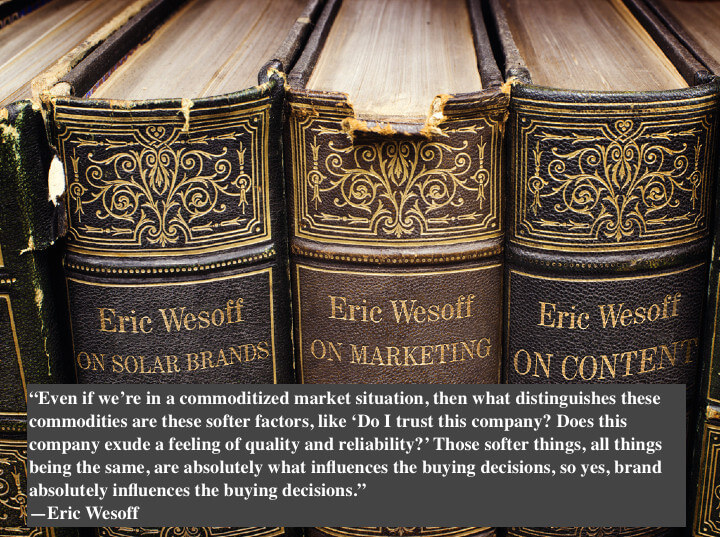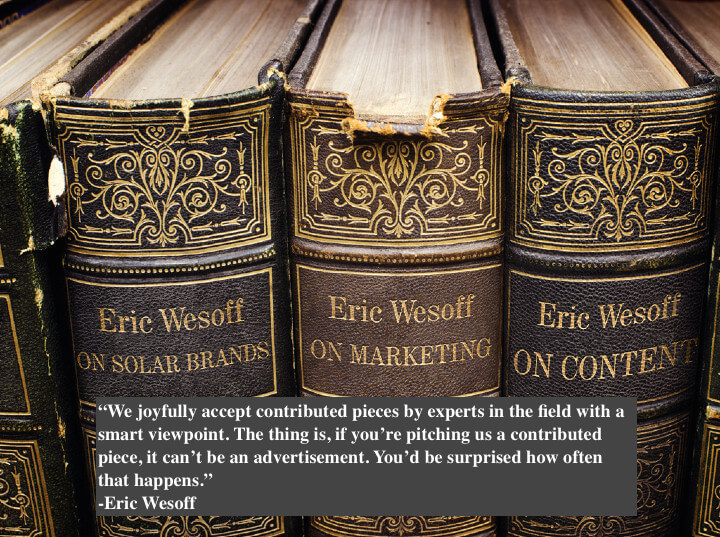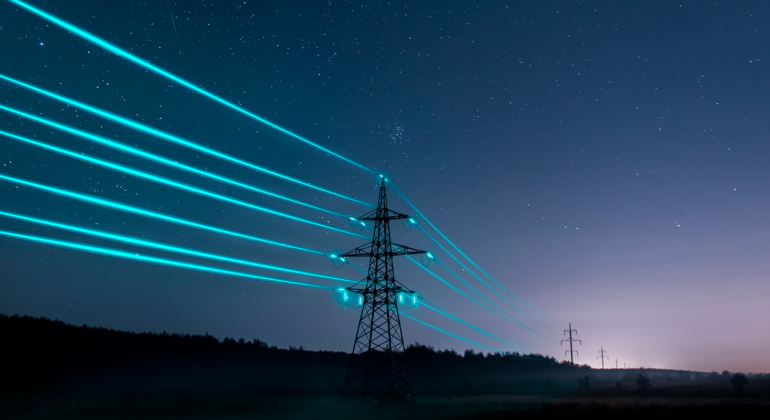In part 1 of my conversation with Greentech Media’s editor-in-chief Eric Wesoff, we discussed what solar topics grab Eric’s attention—and what don’t—as well as some tips for pitching.
In the second of our three-part conversation, Eric and I discuss the influence of solar brands, the perception that solar panels are a commodity, and whether it’s worth the effort of solar manufacturers to market to consumers. Finally, we discuss the value of content marketing and its relation to Greentech Media.

Tor Valenza (TV): Do you think brand marketing is important for solar companies?
Eric Wesoff (EW): I think it is. I’m not immune to marketing messages, and I certainly receive them, and they certainly make an imprint. If you were to do a word response test for me and said things like “SunPower” or “Suntech” or things like “Enphase” or “First Solar,” all of those brands connote a personality and corporate identity to me, and they are clear.
If I were making buying decisions, and even if we’re in a commoditized market situation, then what distinguishes these commodities are these softer factors, like “Do I trust this company? Does this company exude a feeling of quality and reliability?” Those softer things, all things being the same, are absolutely what influences the buying decisions, so yes, brand absolutely influences the buying decisions.
TV: That leads to my next question: Are solar panels and inverters commodities, or is it poor sales and marketing that make them seem like commodities?
EW: I don’t know the answer to that. A SunPower panel is not very much like a First Solar panel, which is not very much like a Trina monocrystalline, although they do produce much of the same thing. But those are hardly comparable and are very differentiated products. They’re not fungible or switchable. Nobody’s going to substitute those panels on a roof or in a development deal. Certainly there are commodities in sub-segments, but I don’t think we’ve gotten to the point where it’s a bag of rice and sale per pound. There’s certainly some emotion still involved.
TV: Should component manufacturers make a larger effort to market to consumers in order to build brand awareness, so that consumers are asking for the solar components? Or should they market just to installers, leaving it up to them to make those purchase decisions?
EW: You study this soft science of marketing, but the case study, I guess, is the Elon Musk hype on the Tesla Powerwall and the sheer amount of buzz and the alleged millions of reservations for this product. I would suggest that there are a lot of soft reservations there, right? This is still an eight to ten thousand dollar project for any homeowner, right?
Here you have an industrial product that’s been soft-edged, photoshopped, and air-brushed to look like a sexy consumer product, and I don’t know what the actual numbers are and how soft that demand is. Is it a hyped number? Or is Tesla going to ship hundreds of thousands of these products with a somewhat fuzzy value proposition? How many are going to be shipped in the next six months? I would suggest that this would be a really good case study for brand marketing of industrial products.
TV: Do you think another solar or battery manufacturer can create another kind of spokesperson who’s as sexy as Elon Musk, or do they have to do it the old-fashion way through sales, marketing, and advertising?
EW: I think if Elon Musk built an $89 Apple-looking solar lamp with a battery in it, he’d sell a load of those things even if someone else could build something like it for half the price. So yes, there is an emotional element to that, and I don’t quite understand it.

TV: Do you read blogs, newspapers, white papers, and other company content?
EW: Yes. My job is to read company blogs and white papers. For example, SolarCity writes very detailed and thoughtful white papers. I just reported on one. That was a 30-page white paper on changing the way the distribution grid was planned and incentivized. This is black belt-level stuff, so I spent a weekend with that, and I wrote a 1000-word article on it because it was something that interested me and was a well-done white paper. So the answer is of course we read and circulate this stuff, but we don’t like ads.
If I read a blog or some paper, even if I don’t agree with it, we may publish it. For example, Catherine Wolfram at Haas School of Business wrote an odd take on Third World countries leapfrogging the grid. It was not well received by our readership. They called her names, they said it wasn’t well written, but great. I’m more than glad to include stuff like that. All I had done is stumble across that article in my wide ranging reading, so yes, of course I read plenty of corporate written stuff.
TV: What types of content do you read that grab your attention?
EW: Well, I don’t think I’m the audience. I’m the gatekeeper to some extent. But for example, SolarCity’s audience is not me, but they want me to publish it. Their audience is the regulators, right? They have to write a screed that talks about their regulatory premise and hope for the future, and so they publish it on their own website and I’m sure they get traffic, but we get a more focused and intense traffic, which is why they want us to cover it. If it’s something that rings the bells of what our editorial goals are, we love that stuff.
We joyfully accept contributed pieces by experts in the field with a smart viewpoint. The thing is, if you’re pitching us a contributed piece, it can’t be an advertisement. You’d be surprised how often that happens.
In the third and final part of the interview, Eric and I have an in-depth conversation about parallels of the solar industry with other industries.
Tor “Solar Fred” Valenza is the chief marketing officer of solar at Kiterocket. Follow him on Twitter at @SolarFred.


